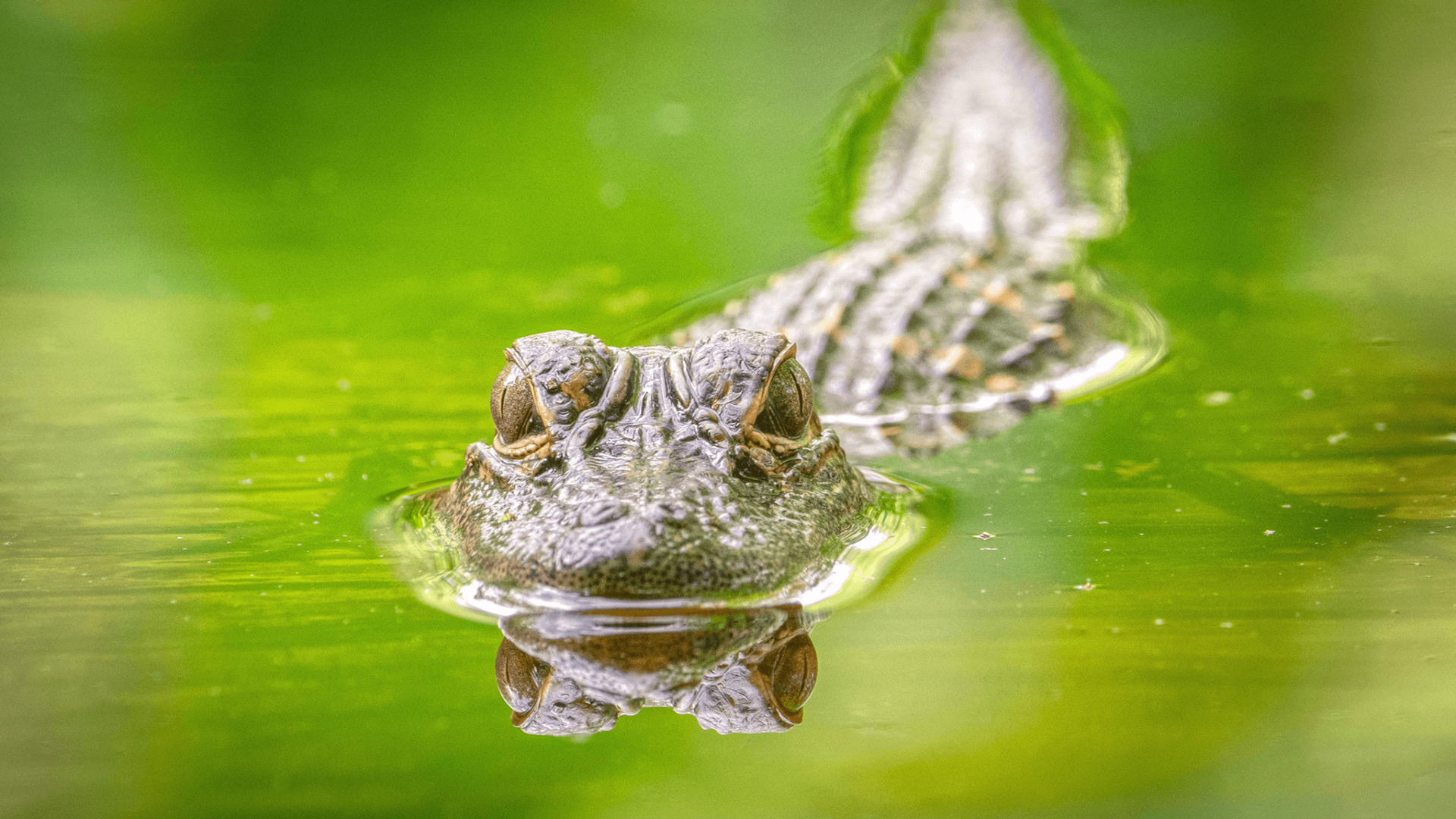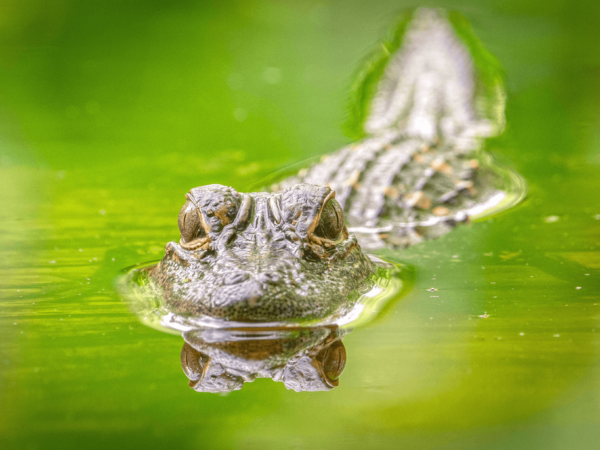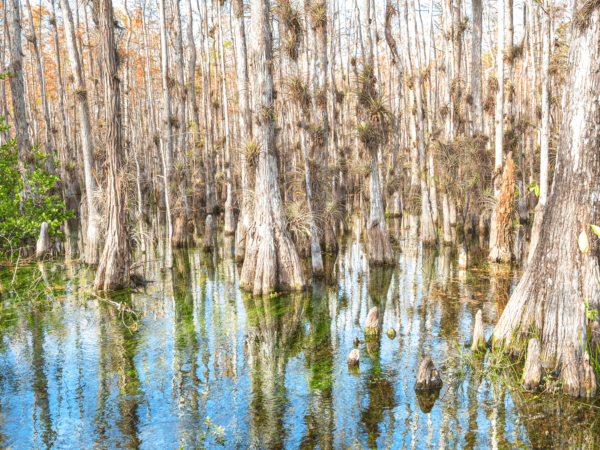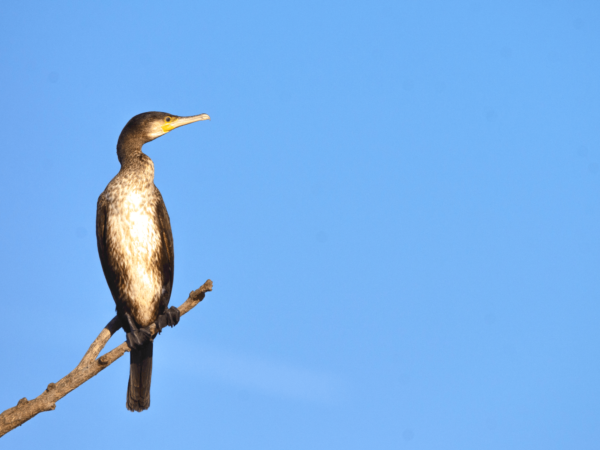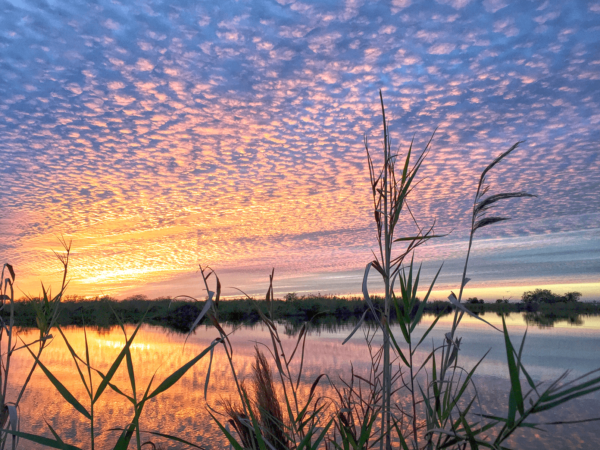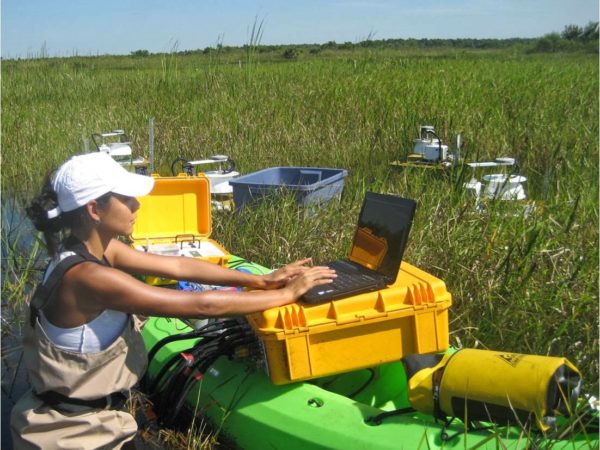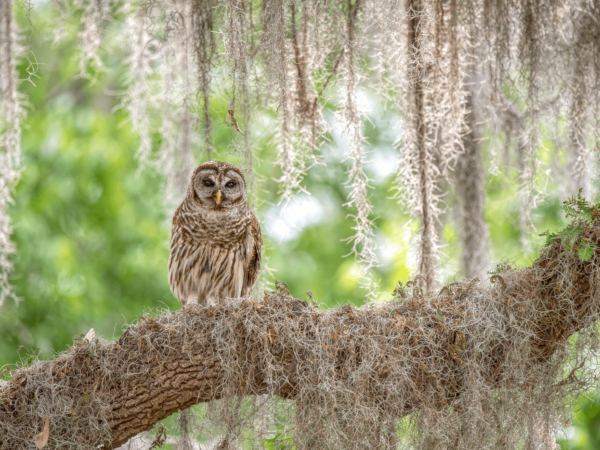Several distinct types of habitat are found here in the Everglades. Each type of Everglades community is distinguished by how it was formed and what kinds of plants and animals are found in it.
A slough, spelled S-L-O-U-G-H, is the type of habitat with probably the funniest name. A slough is a stream of slow-moving water. It is the wettest part of the refuge where water occurs throughout the year— during most years. The plant community here is dominated by water-lilies, spatterdock, and bladderworts. Look in the deeper areas for the yellow flower of the spadderdock, a flower that never opens. You may see a colorful purple gallinule walking on lily pads, enjoying a tasty spatterdock meal.
Sawgrass is another dominant community. Marjorie Stoneman Douglas famously called the Everglades, “The River of Grass,” because of the sawgrass that grows in the shallow water.
An interesting fact is that technically this plant is not a grass but a sedge. Sedges and a grasses are from different plant families. Deer will occasionally forage on young sawgrass, even though its sharp, saw-toothed edges will cut you badly, if you rub against them the wrong way. In areas where wax myrtle and dahoon holly mix heavily with sawgrass, together they can form thickets, called, “hell's nests.” The wet prairie is the largest or most prevalent vegetative community over much of the central and eastern portions of the Refuge. The plants you will find here are low emergent plants, plants that have specially adapted to shallow water. These include various types of beakrush, spikerush, duck potato and the beautiful purple blossoms of the pickerel weed. Tree islands form when a mass of peat under the water breaks loose and floats or “pops-up,” to the top of the water. The peat is composed of marsh plants that have broken down into a new kind of soil. The white water lily is the main source of this peat. It is called, “Loxahatchee Peat.” Eventually, new plants begin to grow on these “pop-up” islands— which can be a few feet to acres in size. Tree Islands provide dry ground for wildlife. The centers and north ends of the small islands have the highest ground; which can be three or four feet higher than the rest of the surrounding community. You will find wax myrtle, dahoon holly, and coco-plum growing on these islands. While these plant communities appear to be separate, they all exist quite near to each other. It is rather like neighborhoods of a town. Just as the people living in their individual neighborhoods need clean air and water to survive; so do the plant and animal communities of the Everglades. How the water flows through these communities and this Refuge, in particular, is important to the life of the entire Everglades system.

